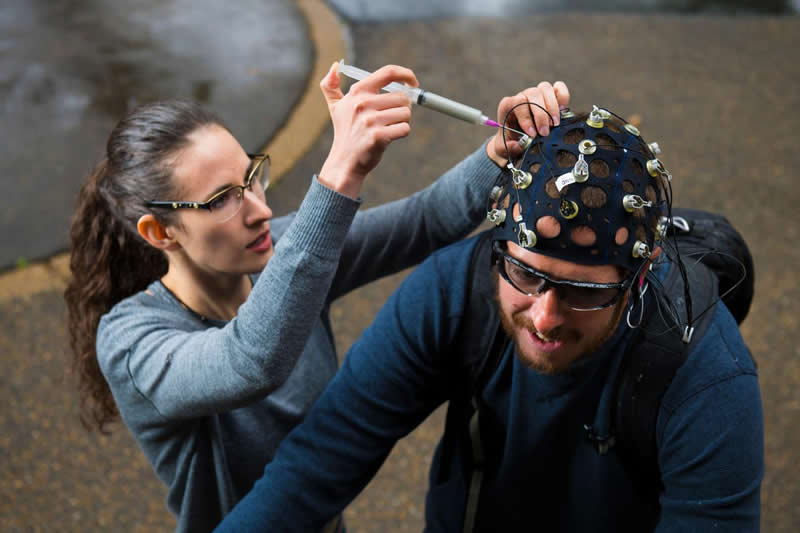Summary: Researchers noted alterations in brain activity during cognitive tasks when playing outdoor sounds in the background. Findings shed light on how the environment affects how we perceive the world around us.
Source: University of Alberta
Have you ever found it difficult to focus on a task due to background noise? Scientists at the University of Alberta are studying just how these sounds impact our brain activity–and what that impact means for designing neurotechnology.
“Why do we prefer to do some tasks in quiet places and others with ambient noise? What is our brain doing to keep us from losing our focus every time we leave the peace and quiet of our homes?” said Joanna Scanlon, lead author of the study who conducted the work as a graduate student in the Department of Psychology.
“It’s important to understand how the brain processes tasks in different environments.”
To begin exploring these questions, the scientists are establishing a baseline for how our brains respond as we complete tasks in different environments by changing background noises. The result? Any time there is background noise, our brain actively works to filter it out–with the largest effect for fluid, outdoor sounds like vehicle traffic.

“We were able to change brain activity during a cognitive task in a noticeable and reproducible way, simply by playing outdoor sounds in the background,” said Scanlon, who conducted the study under the supervision of Kyle Mathewson, assistant professor in the Faculty of Science. “These findings show that our environment affects how we perceive the world around us–and means that much of what we know about the brain is oversimplified since it has primarily been researched in a laboratory setting.”
The findings support an increased trend of taking psychology outside the lab, making use of new, mobile wearable electroencephalogram (EEG) technology to measure brain activity–something Mathewson’s lab is focusing their research on.
“The goal of brain research is to ultimately help people in their daily lives and predict and prevent and treat illness,” said Mathewson. “Almost all of what we currently know about the brain is from studies done in very boring, unrealistic settings in the lab. Perhaps people want a monitor to alert them when their attention is not working optimally or a device to help them remember things they see better. These devices will need to work outside in the real world, in our job sites, vehicles, and during all of our daily activities.”
Source:
University of Alberta
Media Contacts:
Andrew Lyle – University of Alberta
Image Source:
The image is credited to John Ulan.
Original Research: Closed access
“The ecological cocktail party: Measuring brain activity during an auditory oddball task with background noise”. Joanna Scanlon et al.
Psychophysiology doi:10.1111/psyp.13435.
Abstract
The ecological cocktail party: Measuring brain activity during an auditory oddball task with background noise
Most experiments using EEG recordings take place in highly isolated and restricted environments, limiting their applicability to real‐life scenarios. New technologies for mobile EEG are changing this by allowing EEG recording to take place outside of the laboratory. However, before results from experiments performed outside the laboratory can be fully understood, the effects of ecological stimuli on brain activity during cognitive tasks must be examined. In this experiment, participants performed an auditory oddball task while also listening to concurrent background noises of silence, white noise, and outdoor ecological sounds, as well as a condition in which the tones themselves were at a low volume. We found a significantly increased N1 and decreased P2 when participants performed the task with outdoor sounds and white noise in the background, with the largest differences in the outdoor sound condition. This modulation in the N1 and P2 replicates what we have previously found outside while people rode bicycles. No behavioral differences were found in response to the target tones. We interpret these modulations in early ERPs as indicative of sensory filtering of background sounds and that ecologically valid sounds require more filtering than simple synthetic sounds. Our results reveal that much of what we understand about the brain will need to be updated as cognitive neuroscience research begins to step outside of the lab.






